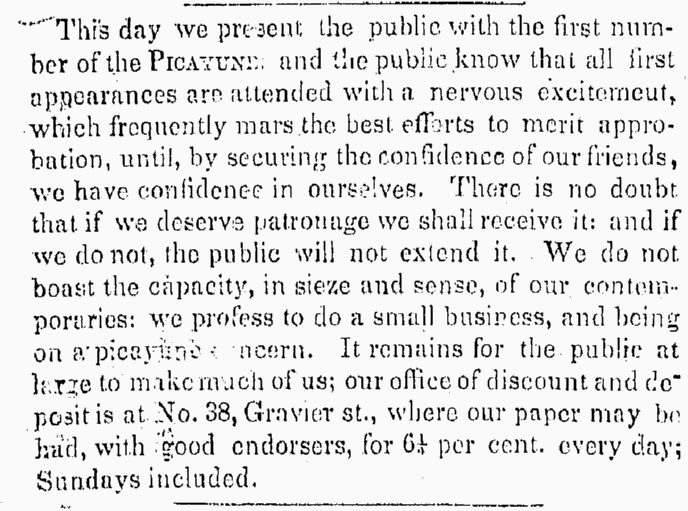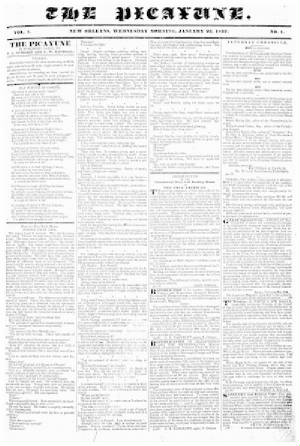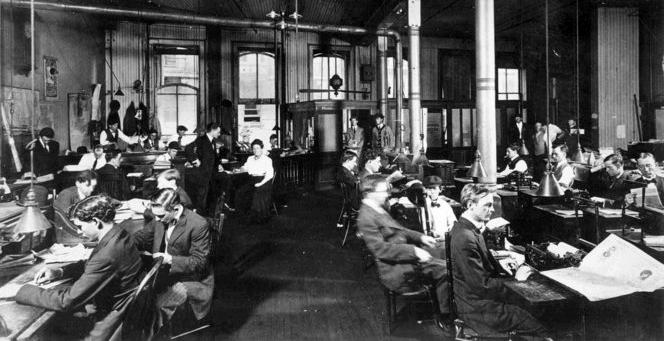|
Today in New Orleans History |
|
|
January 25


 Today we celebrate the first edition of The Picayune on Wednesday,
January 25, 1837. It contained 4 pages, few graphics, and was distributed by two carriers who sold 800 of the 1000 copies
that had been printed from the office at No. 38 Gravier Street The following day, January 26, 1837,
2,000 copies were printed and sold. It was the first New Orleans newspaper to sell for less than a dime. A picayune
(a Spanish coin) equalled about 6 1/4 cents. George Wilkins Kendall (the writer) and Francis Asbury
Lumsden (who handled the buisness end of this budding business) came to New Orleans in 1835 after working in newspapers
in New York and Washington D.C. They sought to reach a broad audience and inluded lighter news than the other popular
newspapers in town. The Picayune's first edition included, on page 1, a romantic fiction which filled
two and one-half columns, a poem titled "Old Winter is Coming -- Scenes From Life" from the New York Mirror, advertisements,
and subscription information -- the Picayune could be regularly secured for a cost of $2.50 per three months or 25 cents weekly.
Page 2 of the of the January 25, 1837 edition included a long "Prospectus", describing what The Picayune aimed to
do and how it intended to do it from No. 38 Gravier Street, "opposite Banks' Arcade" (also known as Hewlett's, which
was apparently the Ruth's Chris Steakhouse of its day -- a restaurant and bar where business deals were made, politics was
discussed, and even stocks were bought and sold). The paper is now a part of Advance Publications, which is owned by the Newhouse
family, and is operated through Advance's NOLA Media Group unit along with its sister website, NOLA.com. It is known to many
New Orleanians as the "Sometimes Picayune" due to Newhouse's decision in 2012 to limited print editions to Wednesdays,
Fridays, Sundays. and Mondays after Saints games. The photo captures the New Orleans Item news room,
circa 1900.  

To receive an update for each day in New Orleans
history, join our facebook page
- Today in New Orleans History
Photo of Jefferson Davis Parkway on January 25, 1972.
A plan for a gallery to be constructed in the center of the chambers of the Cabildo, was shown at a meeting of the Cabildo (the Spanish governing body) on January 25, 1799. This was approved and ordered constructed according to plan.
|
|
|

To receive an update for each day in New Orleans history,
join our facebook page - Today in New
Orleans History.
Analytics |


 Through the years
Through the years
